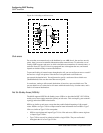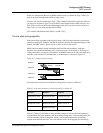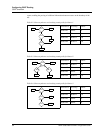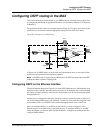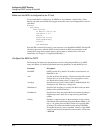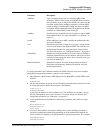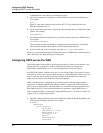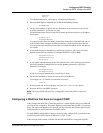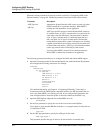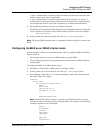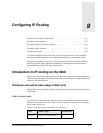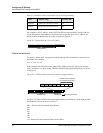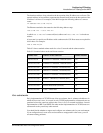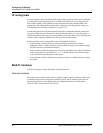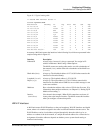
8-14 MAX 6000/3000 Network Configuration Guide
Configuring OSPF Routing
Configuring OSPF routing in the MAX
Parameters already introduced in previous sections are listed in “Configuring OSPF on the
Ethernet interface” on page 8-9. Additional parameters introduced in this section include:
The following procedure describes how to configure the WAN link without OSPF support.
1 Open the Connection profile for the remote Pipeline unit, enable the Route IP parameter,
and configure the IP routing connection. For example:
Ethernet
Connections
90-101 Cprofile1
IP options...
LAN Adrs=10.2.3.4/24
WAN Alias=0.0.0.0
IF Adrs=0.0.0.0
Metric=7
Preference=N/A
Private=No
RIP=Off
Pool=0
(For detailed information, see Chapter 9, “Configuring IP Routing.”) Note that in a
Connection profile, the OSPF Options subprofile includes two ASE parameters that are
active only when OSPF is not running on a link. If you configure these parameters, the
route configured in the Connection profile is advertised whenever the MAX is up.
2 Open the OSPF Options subprofile and set RunOSPF set to No.
RunOSPF=No
3 Set the Cost parameter to specify the cost for the route to the remote Pipeline.
For example, a single-channel BRI link could have a cost approximately 24 times the cost
of a dedicated T1 link:
Cost=240
4 Set the ASE-type parameter to specify the ASE type for this route.
ASE-type=Type 2
This parameter specifies the type of metric to be advertised for an external route.
Parameter Description
ASE-Type and
ASE-Tag
Autonomous System External (ASE) routes are used only when
OSPF is turned off on a particular interface. When OSPF is
enabled, the ASE parameters are not applicable.
ASE-Type specifies the type of metric that the MAX advertises
for external routes. A Type-1 external metric is expressed in the
same units as the link-state metric (the same units as interface
cost). A Type-2 external metric is considered larger than any
link- state path. Use of Type-2 external metrics assumes that
routing between autonomous systems is the major cost of routing
a packet, and eliminates the need for conversion of external costs
to internal link-state metrics. ASE-Tag is a hexadecimal number
used to tag external routes for filtering by other routers.
Used only when OSPF is turned off on a particular interface.
When OSPF is enabled, the parameter is not applicable.



